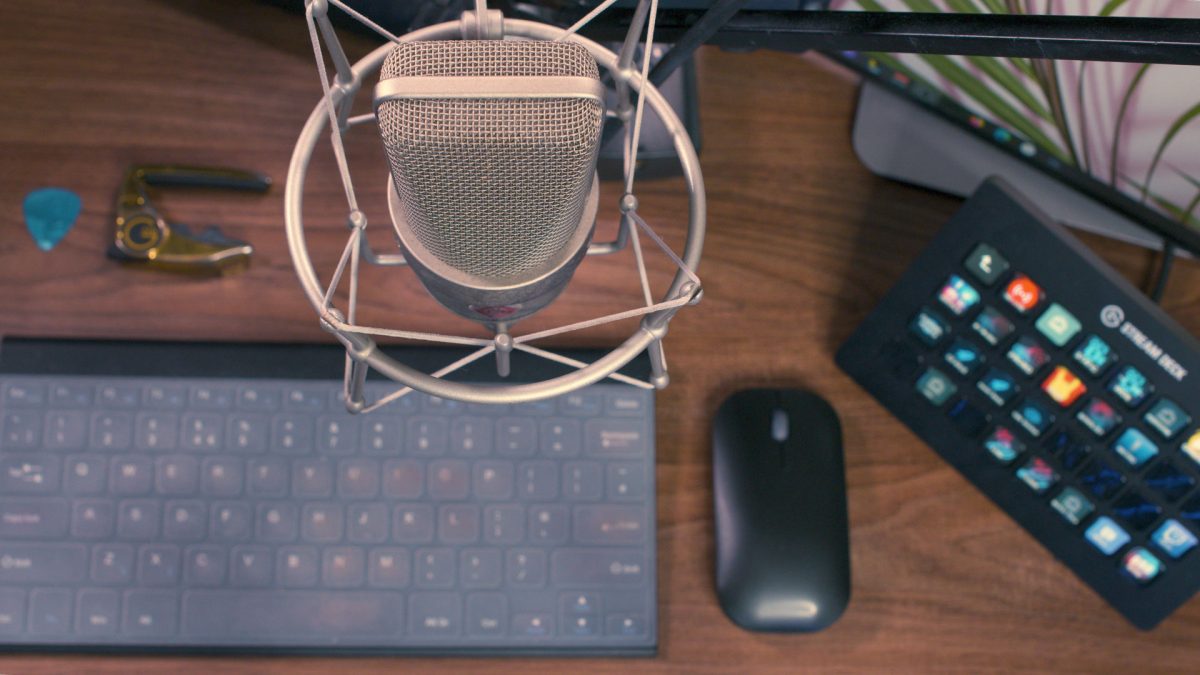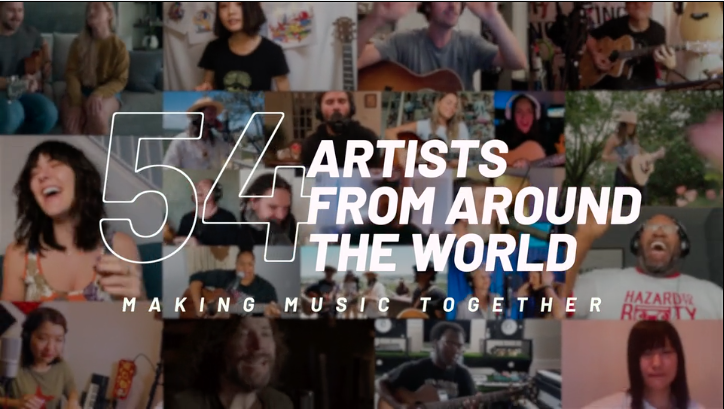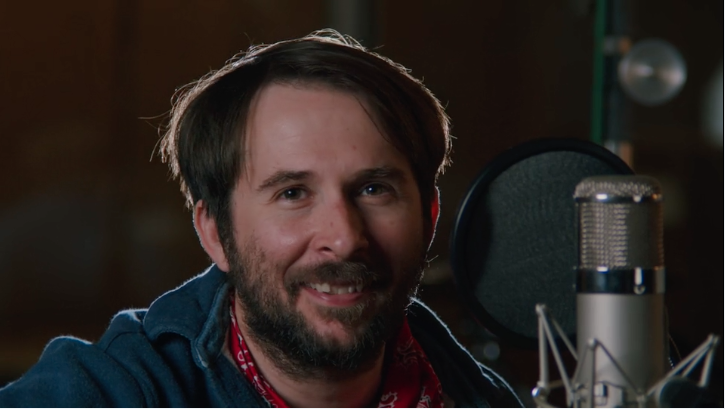It’s no secret that 2020 was a year of tremendous challenges, particularly within the music ecosystem. The music business turned out to be particularly vulnerable to a crisis that shut down public spaces and forced people to remain in their homes for everything but essential needs. Musicians of all stripes shared this industry-wide trauma as shows were canceled, tours postponed, and festivals shut down. Venues around the world closed their doors, some, sadly, for the last time, unable to survive the economic fallout of the pandemic. Outwardly, it may have seemed that music just…stopped happening.
But in the digital realm, music thrived. Artists forged ahead in bedrooms and living rooms, basements and cramped apartments, making music out of the spotlight while finding new ways to share it with the world. Despite reticence from record labels to break new artists, or radio stations to play their music, artists kept writing songs, recording albums and playing for their fans. The term “pandemic album” became common parlance in critics’ reviews, promising a kind of musical time capsule sure to be analyzed for years to come. For many, social media and livestreams took the place of record labels and promoters as artists used technology to keep music flowing to fans. Artists at every level of popularity or obscurity tuned into Instagram, Facebook and TikTok to share new music, talk to fans, even write new songs with a live audience. It was both a testament to the essential need for music and the ability for artists and listeners to adapt on the fly to create new conduits through which to experience it.
Artists Ride the Livestreaming Boom
Working against the current, artists began digging into their connections with the broader music community to put music back on the “stage” without creating a public health risk. These shows, streamed via artist websites, social media or dedicated platforms such as StageIt, doubled as moneymaking tools for both the venue and the artist at a time when income has been sparse, also providing live music for fans desperately missing it. Even just a couple of years ago, this kind of experience would have been impossible–not because of technology or logistics, but simply because audiences weren’t willing to pay for live music that wasn’t live in the sense of everything that term implies for music lovers: the proximity of the musicians, the immersion in the sound, the feel of moving and swaying with a crowd of other fans who love the music as much as you do.
But people didn’t start wanting to pay for virtual concerts just because the real thing was gone. Instead, the nature of livestreaming changed to meet the new demand not just for live music in a digital world but for connection and community at a time when a majority of the music-listening public was stuck at home. Instead of offering a “live” performance that might as well have been previously recorded, artists began setting up shows that involved direct input from audiences.
Watch Switchfoot play their song “Float” on an episode of The Fantastic NOT Traveling Music Show filmed from a hot air balloon.
Already-successful acts were able to take advantage of their existing fanbases, scheduling weekly shows where they played original songs along with covers and requests from the audience, usually with a high dose of commentary from the musicians and conversations with fans. San Diego alt-rockers Switchfoot were among the first groups to nail down a working formula for paid livestreams, creating a series called “The Fantastic NOT Traveling Music Show.” Fans could purchase single tickets to individual weekly livestreams or even pay a modest monthly fee for universal access to the shows, which the band works hard to keep fresh and entertaining every time. The platform, says Switchfoot bassist Tim Foreman, was motivated by dual desires to continue bringing people together with music and to support the band’s touring crew and wider team when the income generated by live music evaporated.
“Music has always been a way forward for us, even when we can’t see the path,” Foreman says. “So I can’t even begin to explain how emotional it was to play our first livestream in June. It was an incredible sensation to be playing music with other people again.”
Global audiences seemed to feel the same way. Soon, livestreaming turned a one-way viewing experience into a dialogue where artists could engage directly with fans, answer questions, take song requests and generally forge connections with audiences that aren’t possible with true live music. Foreman says that though he, his bandmates and the music world at large are excited to get back to “true” live performance, livestreaming will almost certainly become a regular part of creating music and growing an audience.
“I think we all agree that livestreaming is certainly not a replacement for normal live music,” he explains. “But I do believe it is something else entirely. It really has the potential for musicians to grow deep roots with their fans and opens up an entirely new world of opportunities, especially internationally. We’re playing live music for people all over the world, in countries we’ve never even visited, and I’m only a few miles from my house. Others that we’ve met have medical conditions that prevent them from going to concerts, and this has opened up an entirely new world for them. The stories go on and on.”
Venues Forge Ahead
The livestreaming boom has helped lift other parts of the music industry, as well. On the venue side, some brick-and-mortars were able to get in on the digital action, working with artists to create semi-permanent livestreaming setups complete with cameras and lighting. The result was a kind of performance for which audiences could buy tickets and get excited about the idea of seeing live music again—even through a computer or TV screen. Major venues across the country such as Colorado’s Red Rocks Amphitheatre and the Hollywood Bowl in Los Angeles did what they could to develop virtual programming on the fly, culminating in ticketed pop concerts, symphonic performances and other live entertainment broadcast via livestreaming.
Small venues got in on the action too. The Belly Up Tavern, a popular San Diego concert venue loved by many on the Taylor team, hosted a variety of artists on their stage to be shared with virtual audiences, bringing in some major names to keep the musical energy flowing in the city. This year has seen a performance by Taylor player The White Buffalo, another by Ziggy Marley, and a 50th birthday bash for local legend Steve Poltz, whose “Quarantine Blues” has been making the rounds on social media for months. Venues everywhere seem to be holding to the Thoreau maxim that adorned the Belly Up façade earlier this year: “When I hear music, I fear no danger.”
The sentiment seemed to ring true across music fandom, and nowhere was it more true than on social media, where artists found ways to bypass the parts of the traditional industry that had been closed. The pandemic and its consequences shined a light on the music business, revealing both gaps in how the industry finds and promotes new artists as well as opportunities to engage with new types of artists, especially young musicians who have grown up sharing themselves and their creations on social media. Instead of limiting new music, in many ways the pandemic served as a pressure cooker for emerging artists who were poised to capitalize on the shift to the digital arena.
Making Music Social
The DIY ethos of livestreaming took hold around the world this year, and for many artists, it provided more than a stopgap solution to the problem of closed venues, instead offering an avenue into the business for people who weren’t already tied into the record label machine.
For pop songwriter Emma McGann, the surge in popularity of livestreaming on social media represented a vindication of the work she’d already done, putting her at the top of the livestreaming pack (learn how Emma does it in the “Livestreaming Like a Pro” sidebar in this story). For others, it meant being able to access and retain an audience of committed fans and followers that simply wasn’t possible for the vast majority of musicians. And while artists of all backgrounds, ages and genres made the shift and began performing on livestreams, it was younger, emerging artists who truly led the charge into social media.
The forms these livestreams take are as varied as the musicians themselves. Some stuck with a structure somewhat resembling a virtual open mic night, setting up hour- or two-hour-long streams on YouTube or Twitch, the popular video game streaming service. Others turned to a more conversational approach, particularly on platforms like Instagram and TikTok, which make it easy for streamers to take comments from audience members in real time and respond directly to fan requests or questions. Some musicians showed off their improvisational chops by taking rapid-fire song requests; others created a collaborative environment with viewers, bringing song ideas and lyrical snippets to the stream to be workshopped and composed with fans. Across the internet, newcomers and music industry veterans hopped on social media to grow their music careers during the pandemic, catapulting some to stardom that extends beyond TikTok and Instagram.
But music on social media since the pandemic began has taken on many forms and brought people together in ways that no one could have predicted just a year ago. In one corner of TikTok, millions of people became enamored with singers and musicians producing sea shanties, setting off a lengthy trend that helped some of the originators launch new careers in music. Elsewhere, music-lovers got together to create a fully online musical version of the popular Pixar film Ratatouille. Regardless of the final product, people found ways to keep making music without being able to rehearse and record in the studio. Everywhere you looked on social media, there was evidence of music’s power to connect and inspire people in any circumstance.
Livestreaming Like a Pro
In a normal world, Emma McGann would have spent 2020 traveling the United States, touring the country to perform for live audiences, and selling merch at crowded tables in busy venues. The UK-based singer-songwriter was slated to begin her tour in April, a plan that was quickly dashed by the lockdowns that gripped the U.S. and the world in March of last year.
Fortunately, McGann is no stranger to alternative ways of creating and sharing music, and has been hosting livestream shows from her home north of London for years. Already ahead of the curve when the pandemic hit and venues closed, McGann was better prepared than almost anyone as virtually the entire music business moved to social media in a matter of weeks.
McGann has cultivated an ideal musical space for her livestreams, a special filming studio complete with tropical backdrop and vivid fluorescents whose retro neon vibe matches her heterochromatic hairstyle. The room has a highly distinctive aesthetic, nailing down a key element in the recipe for successful livestreaming: recognition. Arrive at one of McGann’s Instagram posts or videos on TikTok and you immediately know that you’re in her world, the iridescent lights and leafy background an instant tell. It’s just one element of the musically idyllic space she’s created, which is also equipped with camera rigs, recording gear, her digital audio workstation (DAW) and whatever guitar—often a Taylor—she’s selected for a performance.
Since so many artists are trying their hand at livestreaming on social media, we asked McGann to put together a guide for new streamers on the essentials of performing music, filming videos and interacting with fans in an online context. Watch the video and learn how an experienced pro crafted her perfect musical ecosystem.
Taylor’s Pandemic-era Contribution
For those of us here at Taylor, the desire to keep making music stemmed from our heritage as guitar builders, our relationships with the broader music community, and a simple hope that what we do in our corner of the music world could in some small way help people get through a difficult time. So while we forged ahead as best we could with what we do best, we were also reaching out to our artist family, making calls to our content-creator friends and, eventually, recording music. The result was an original song, penned by Keith Goodwin and mixed by Gabriel O’Brien, called “I Know What Love Is (Because of You).”
Originally written by Goodwin to commemorate his mother-in-law who battled illness in isolation during the COVID crisis, the Good Old War frontman teamed up with Taylor’s own Jay Parkin to turn the song skeleton into a fully imagined single. After crafting the song and recording several tracks, though, the duo was inspired to do even more.
With a finished song in hand, Goodwin and Parkin reached out to artists around the world—Taylor players and singers and songwriters and sound engineers—to seek contributors for the song. Some added new parts on guitar, keys or bass, while others lent their voices to verses and backing vocals. In the end, more than 50 artists joined the project, including Zac Brown, KT Tunstall, Jason Mraz, and many more, sending in hundreds of tracks that were funneled to audio engineer Gabriel O’Brien, frequent Taylor collaborator and multi-talented recording whiz. After a heroic effort on O’Brien’s part, the song came together as a single with an accompanying music video.
Over 50 artists from around the world contributed parts to “I Know What Love Is,” which continues to generate donations for the MusiCares foundation.
As of publishing time for this story, “I Know What Love Is” had tallied over 1 million streams on Spotify, plus over hundreds of thousands more on other services. It’s also been played by radio stations across the United States and featured in publications like American Songwriter and others.
To boot, the song has raised thousands of dollars for MusiCares, an organization under the GRAMMY Foundation that provides critical support to individuals and families who depend on the music industry for their livelihoods. MusiCares has been an essential resource for music industry professionals, especially those whose work in the backgrounds of concert venues, tour busses and recording studios makes creating and performing music possible. The organization’s mission is wide-ranging, providing everything from basic necessities and rent assistance to mental health care and substance abuse counseling. That’s part of why Keith Goodwin was so passionate about writing the song and making sure it reached audiences, he says—MusiCares has made a significant impact for him and the people he loves.
“MusiCares pretty much saved the lives of a few of my best friends in the world,” Goodwin says, “by helping them get through rehab. I want to help MusiCares whenever I can.”
For others involved in the project, such as superstar producer Will Yip, the idea of lifting up the broader music-making community was also about keeping music alive during a difficult time.
“Those artists, crew, engineers—they need help,” Yip says, “because the world needs them. The world needs their artistry. I couldn’t be more grateful that something like this exists.”
Recently, we were able to arrange meetings with Keith Goodwin and a few other artists who were involved in creating the song. They shared stripped-back renditions of “I Know What Love Is.” That these solo performances of a song that originally involved so many different artists can maintain and even build on the song’s potent emotional message is a testament both to Goodwin’s songwriting and to music’s power to emotionally connect us to a larger world.
No one can deny the impact that the pandemic has had on the global music industry, and for many people, the past year has been about weathering the storm and nothing else. But strange circumstances make for unpredictable outcomes, and music found a way not just to endure but, in some ways, to thrive. From the livestreaming explosion to the rapid musical evolution taking place on social media to the inspiring solidarity found within the industry, music always finds a way.



